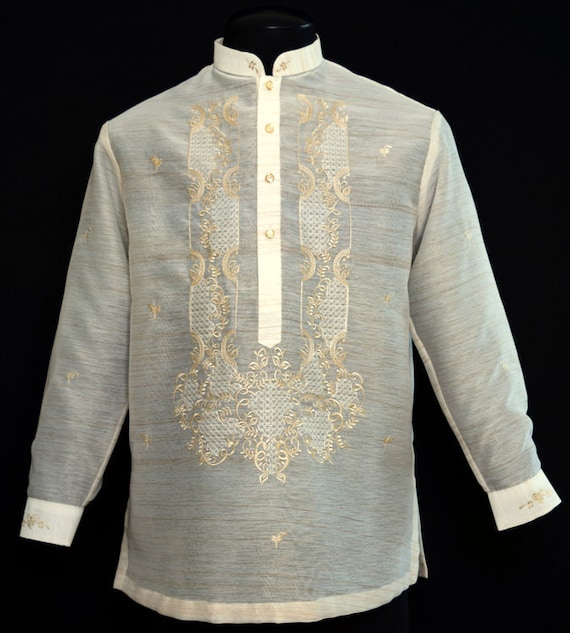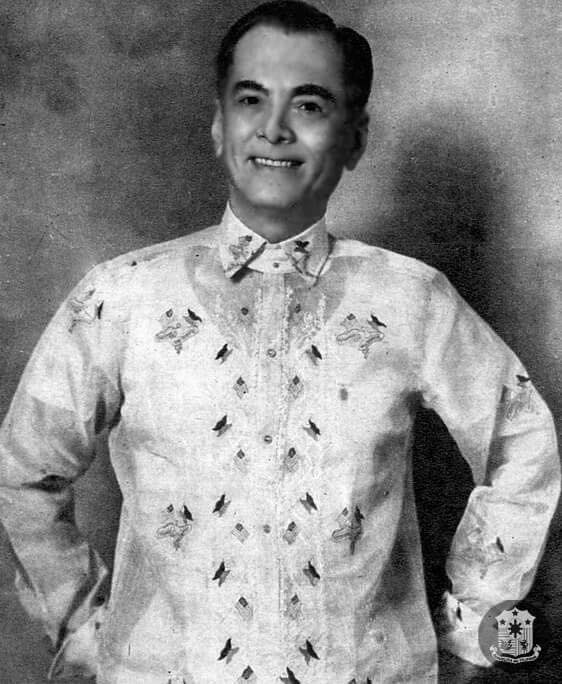Getting My Where To Buy Barong Tagalog Near Me To Work
Table of ContentsBarong Tagalog Store for Beginners8 Simple Techniques For Barong Tagalog For MenNot known Details About Formal Barong Tagalog

The term is generally not taken advantage of.
Rather, the name was coined to identify the gown as indigenous (thus "tagalog", i. e. ), as opposed to the styles of dress of Europeans and various other international cultures.
Barong tagalog can differ considerably in regards to layout and material made use of, yet they share typical qualities of having long sleeves, needlework, being buttoned (midway or straight down the breast), as well as the absence of pockets. They are likewise put on loosely and have slits on both sides. Historically, the product made use of for barong tagalog relied on the social course of the user and the procedure of the celebration.
The 5-Second Trick For Barong Tagalog For Men

The quality of the material and the complexity of the needlework were usually indicators of the status as well as wide range of the wearer. The embroidery of the barong tagalog are commonly put on a rectangular section on the front of the breast (referred to as pechera, "tee shirt front", from Spanish pecho, "upper body"), and/or over the whole tee shirt (sabog, from Tagalog for "scattered"). go to this site.
History [modify] Pre-colonial period [edit] The barong tagalog stemmed from the Tagalog baro (actually "shirt" or "clothes", additionally known as bar or bay in various other Philippine languages), a straightforward collar-less shirt or jacket with close-fitting long sleeves used by both males and females in most ethnic groups in the pre-colonial Philippines. These were made from harsh linen-like fabric woven from native abac fiber, or from imported fabrics woven from silk, cotton, as well as kapok, amongst others. Amongst Tagalog males, they were frequently coupled with a rectangle of highly decorated towel referred to as the salaual or salawal used knee-length and also attracted up in the center (like an Indian or Thai and Cambodian ); while in ladies they were matched with a wraparound skirt called the.
, apart from comparable baro (which had shorter sleeves) and also salaual combinations, men likewise used colorful robe-like and also coat-like variants that can extend to well below the knees (understood as the marlota as well as baquero in Spanish, specifically). These were sometimes belted at the waistline.

The Facts About Barong Tagalog Store Revealed
The couturier Jose "Pitoy" Moreno has actually assumed that this transitional style of t-shirt was the camisa de chino of later centuries, which makes it a forerunner to the barong tagalog. Representations of members of the top courses (consisting of citizens as well as) in the 18th century showed that they usually put on European-style clothes. find this.
These were much longer than the contemporary barong tagalog, reaching to a little over the knees. They were likewise typically candy striped with vibrant shades like blue, red, or green. They already presented characteristics of the modern barong tagalog, including being made of large nipis product, needlework, lengthy sleeves, and a loosened shape with slits on both sides.
The sheer material utilized by barong mahaba also demanded the wearing of an undershirt, known as camisn or camiseta, which was additionally endured its very own by citizens. By the 1840s, barong mahaba largely befalled of style. In this period, it progressed into the modern-day "classic" barong tagalog, being much shorter with much less extravagant folded collars, while still preserving the large material as go now well as other baro characteristics.